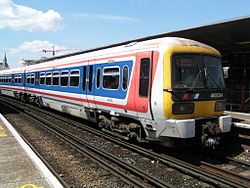| Part of a series on |
| Rail transport |
|---|
 |
| Infrastructure |
| Rolling stock |
| Urban rail transit |
| Other topics |
| |
This article contains a list of jargon used to varying degrees by railway enthusiasts, trainspotters, and railway employees in the United Kingdom, including nicknames for various locomotives and multiple units. Although not exhaustive, many of the entries in this list appear from time to time in specialist, rail-related publications. There may be significant regional variation in usage.













